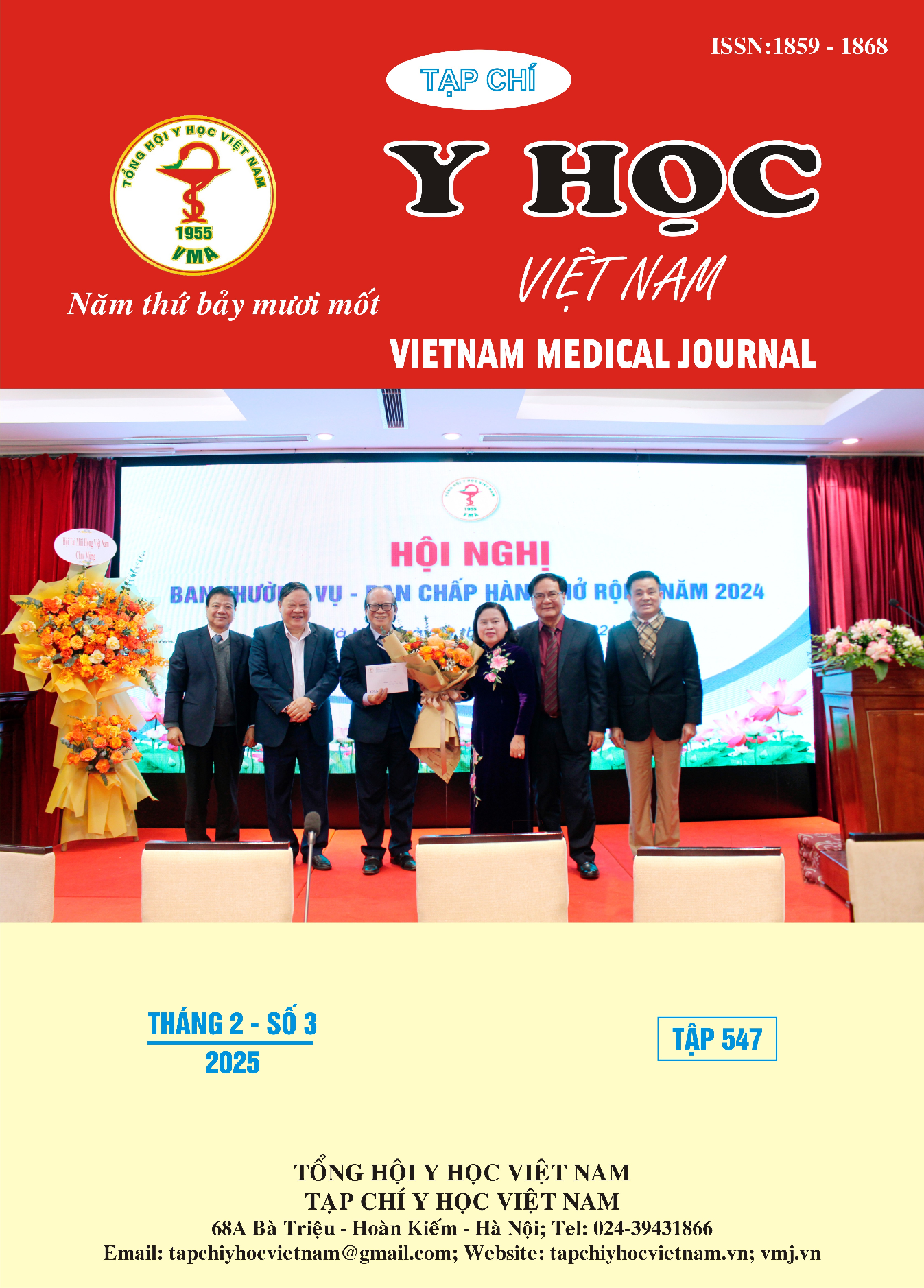CLINICAL CHARACTERISTIC AND THIRTY-DAY MORTALITY OF PATIENTS WITH ACUTE HEART FAILURE
Main Article Content
Abstract
Background: Acute heart failure is a progressive, life-threatening condition requiring appropriate treatment. Despite advances in the management of acute heart failure, the 30-day mortality rate of these patients has not decreased significantly. Objectives: To describe the clinical characteristics and the 30-day mortality rate of patients with acute heart failure. Methods: A cross sectional study. Results: A total of 138 patients were recruited for our study. The median age of the patients was 67 years, and 52.9% were female. The major comorbidities were hypertension (73.2%), diabetes mellitus (42%), dyslipidemia (64%), chronic coronary artery disease (40.6%), atrial fibrillation (20.3%), and chronic kidney disease (16.7%). The 30-day mortality rate was 14.5%. There were significant differences in heart rate (p < 0.001), SpO2 (p = 0.04), systolic blood pressure (p = 0.011), diastolic blood pressure (p = 0.008), Barthel index (p < 0.001), NYHA class IV (p < 0.001), acute coronary syndrome (p = 0.001), serum NT-proBNP (p = 0.033), serum creatinine (p = 0.034), and ST depression (p = 0.001) between the two groups, with and without 30-day death. Conclusions: The 30-day mortality rate remains high. Heart rate, SpO2, systolic blood pressure, diastolic blood pressure, Barthel index, NYHA class IV, acute coronary syndrome, serum NT-proBNP, serum creatinine, and ST depression were associated factors with 30-day death.
Article Details
Keywords
Acute heart failure, 30-day mortality
References
2. Tao Yan, Shijie Zhu, Xiujie Yin, et al. Burden, Trends, and Inequalities of Heart Failure Globally, 1990 to 2019: A Secondary Analysis Based on the Global Burden of Disease 2019 Study. 2023;12(6): e027852. doi:doi:10.1161/ JAHA.122.027852
3. Giancarlo Marenzi, Nicola Cosentino, Livio Imparato, et al. Temporal trends (2003–2018) of in-hospital and 30-day mortality in patients hospitalized with acute heart failure. International journal of cardiology. 2025;419:132693. doi: https://doi.org/10.1016/j.ijcard.2024.132693
4. Khuyến cáo của Hội Tim mạch Quốc gia về chẩn đoán và điều trị suy tim cấp và suy tim mạn (Hội Tim mạch học Việt Nam) (2022).
5. J. P. Collet, H. Thiele, E. Barbato, et al. 2020 ESC Guidelines for the management of acute coronary syndromes in patients presenting without persistent ST-segment elevation. European heart journal. 2021;42(14):1289-1367. doi:10.1093/eurheartj/ehaa575
6. Xavier Rossello, Héctor Bueno, Víctor Gil, et al. MEESSI-AHF risk score performance to predict multiple post-index event and post-discharge short-term outcomes. European heart journal. 2020; 10(2): 142-152. doi: 10.1177/ 2048872620934318
7. D. Wussler, N. Kozhuharov, Z. Sabti, et al. External Validation of the MEESSI Acute Heart Failure Risk Score: A Cohort Study. Annals of internal medicine. 2019;170(4):248-256. doi:10. 7326/m18-1967
8. Hoàng Văn Sỹ, Triệu Khánh Vinh, Trương Phi Hùng, et al. Đặc điểm lâm sàng và siêu âm tim ở bệnh nhân suy tim cấp nhập viện có biến cố tử vong và tái nhập viện 30 ngày sau xuất viện. Tạp chí Y học Việt Nam. 2023;524(1B)doi: 10.51298/vmj.v524i1B.4801
9. Gurmehar Singh, Hyma Bamba, Pugazhendi Inban, et al. The role of biomarkers in the prognosis and risk stratification in heart failure: A systematic review. Disease-a-Month. 2024:101782. doi:https://doi.org/ 10.1016/j. disamonth.2024.101782


